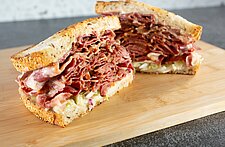In times of crisis, the thing consumers are looking out for the most when considering food options is finding what will bring them the most comfort. And what’s more comfortable that slicing into a juicy oven-baked chicken thigh or biting into the crispy skin of a piece of perfectly fried chicken? With COVID-19 on the rise, chicken consumption is also going up and making it the reigning king of the meat department, with more consumers and families turning to a familiar, nutritious, affordable favorite in this time of uncertainty. We looked back on trends from the past to predict the important role chicken has and will play at the dinner table before, during, and after COVID-19 passes.
Stay ahead of the changing industry with In-sight, learn more here!
Chicken Consumption Pre-COVID
According to a report by the NPD Group on National Eatings trends, from 2018 to 2019, the average person ate 48 fresh or frozen in-home base chicken dishes, with the top being baked or roasted, fried, and as nuggets. The top buyer for chicken were low-income consumers and large families with those making a yearly household income of under $25k bought and ate the most chicken dishes at home with an average of 57.8 dishes per year, and households with five or more members ate 54.3 dishes per year.
Ranked as the #3 among top base food, chicken is most consumed at dinner, nearly always at the center of the plate, and eaten most in the Southern United States. The NPD found that the top motivations and reasons behind this is that chicken dinners are quick and easy, healthy and diet-friendly, satisfying, and a family-favorite across generations and cultures. A versatile meat, consumers season chicken with a variety of spice blends and sauces with BBQ, pepper, and Asian sauces being the most popular.
Chicken Consumption During the Great Recession
No other meat comes close to chicken consumption in times of crisis. The 2008-2009 Great Recession pushed consumers to cook more at home to save money, but continued years later post-recession with a rising trend of cooking at home as opposed to going out to eat. According a report by the NPD Group on Historical Eating Trends, even at the height of the recession in 2009, fresh chicken accounted for 1.5% of all in-home base dish food and beverage earnings.
Compared to steak, which accounted for 0.4% or pork with 0.6%. That same year, on average a person ate fresh chicken as an in-home base dish 34.8 times per year, compared to 7.9 times per year for steak and 14.2 for pork. While steak and pork saw a -1.6 and -1.5 growth, respectively, when comparing annual eatings per capita post-, during, and pre-recession (2004-2014), fresh chicken had a +3.6 rise, while eggs had +5.0. Chicken outsold all other meats by a landslide while the perimeter of the store of fresh foods, meats, and produce, in general, outsold the mixed bag of non-perishables, indulgent foods, and non-foods in the center of the supermarket.
Receive the latest industry trends to your inbox - CLICK HERE!
![]() Current COVID-19 Chicken Consumption
Current COVID-19 Chicken Consumption
After almost two months, COVID-19 buying habits are on track to follow recessionary shopping trends and can help predict where buying habits are headed. Panic buying spiked in mid-March of non-foods and frozen, canned, and center of the store non-perishables, then settled into a high-rate of consumers shopping for fresh food, meats, and produce once stocking up was less of a priority. Despite restrictions and social distancing measures, consumers are taking more, smaller trips to the supermarket for fresh foods, a rate of visits that have grown 38% over the previous year’s amount, according to a report by IRi.
However, unlike the previous man-made Great Recession, the virus-fueled COVID-19 crisis is having catastrophic effects on all industries that has never been dealt with at this scale. United States unemployment is projected to be 20%, according to Fortune Magazine, which means over 30 million people are rethinking their budgets and buying habits. Value brands, foods, and deals will be important while what’s deemed as high-priced, non-essentials continue be cut or bought at a lower volume. Chicken, historically, is a well-priced, nutritious food bought most by lower income families, so during a recession, it’s no wonder the buying rate outshines other, pricier meats.
There’s a problem previous recessions didn’t have to contend with, though, and that’s a globally hostile sickness. Numerous articles are reporting that consumers are finding it hard to find chicken in stores as supermarkets race to restock but can’t because of problems out of their control. Because of actual COVID-19 outbreaks and concerns of outbreaks at facilities, farms, and plants, we are starting to see that without the proper manpower, it’s getting harder for distributors to keep up with consumer demand. That, combined with the forced closure of restaurants, food once destined for plates is being destroyed, depleted, or going to waste, especially fresh foods that historically are the best-performing during times of crisis. Sales continue to be strong for chicken as people stay home and prepare meals for their family, however, and if history has anything to say about it, will continue its rise in the face of a new recession.
Want to learn more about how food and beverage companies can succeed in this environment? Continue reading the latest on COVID-19 and the food and beverage industry:
• Foodservice Adaptations in the Age of COVID-19
• COVID-19: Center of the Store Report
• 10 Opportunity Areas for CPG and Retailers in a COVID-19 World
• Behind the Rise of Batch Cooking in 2020






